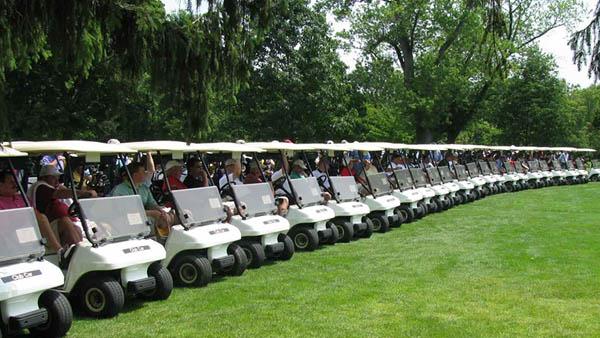The National Golf Foundation is very good at what it does.
 When it comes to collecting scientific data on the golf industry, the NGF is so good that the rest of us spend the rest of the year going through the numbers to learn what is going on over time regarding the business of golf.
When it comes to collecting scientific data on the golf industry, the NGF is so good that the rest of us spend the rest of the year going through the numbers to learn what is going on over time regarding the business of golf. When it comes to being a cheerleader for a struggling industry, the NGF knows no peer. After all, rooting on a team that shrinks in size every year and convincing others it still can win the Super Bowl must be a challenge.
When it comes to drawing conclusions from its own data, however, the NGF might need a little help.
In a sampling of 72 golf industry insiders who sell equipment to consumers or sell to those who sell to consumers, 61 percent said they "believe" golf is perceived by the public in a positive manner. Never mind that the industry lost a net 225 golf courses last year and 993 since 2006. Never mind that nearly 1 million people left the game in 2014 (the most recent data available) and 8 million have bolted for greener pastures since 2002.
Asking industry stakeholders to weigh in on how they think others view the game and the industry is perception, not reality. It should be abundantly clear to anyone in golf that many see golf in a negative light. But how many?
The supposition that about 60 percent of people view golf in a positive way might be spot on. It also might be inflated, or it might even understate the public's perception of the golf business. Based on this survey, we'll never know.
When a trade association solicits opinions, compiles data and releases the information complete with graphs and statistics, the exercise implies that the message is official and generally accepted as industry fact - even if it merely is perception.
NGF, its members and others with a stake in the success of the industry might have been better served had the Jupiter, Florida-based group gone directly to those who play, those who don't and those who used to with a scientific survey to learn what they think about golf, why they don't play (or why they don't play more often) and whether they think they might any time soon. That would be reality, not perception.
The NGF's sample population had more measured opinions on the future of the the industry.
A little more than half the respondents said they believed the game's popularity during the next three to five years would remain "about the same" and a little less than half actually thought the game might become slightly more popular.
Respondents cited roadblocks into the game such as an elitist mentality that is not accepting enough of young people, women and minorities.
According to the survey, about 75 percent of respondents plan for some level of growth in the golf segment in next three to five years, and believe it enough to plan for increased spending.
Those believing the number of golfers and rounds played will climb cited aging baby boomers and popular young professionals like Jason Day, Jordan Spieth and U.S Open champion Dustin Johnson will help drive more interest in the game in the near future.
According to the NGF's own data, the 22 million golfers in the game today are the fewest since the mid-1980s. Although there was a 1.5 percent increase in rounds played last year, some industry analysts believe the number of golfers in the system to dip below 20 million for the first time in decades.
Before growth can occur, respondents admitted many things must change, such as making growing the game the top priority, improving customer service, embracing societal shifts and integrating new technologies into the game on an everyday basis.
That much we know is industry fact.

